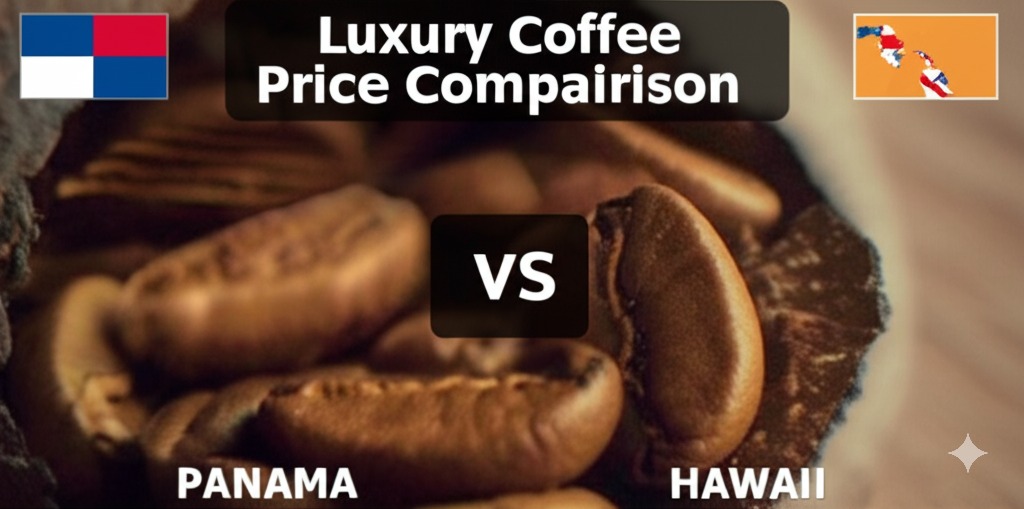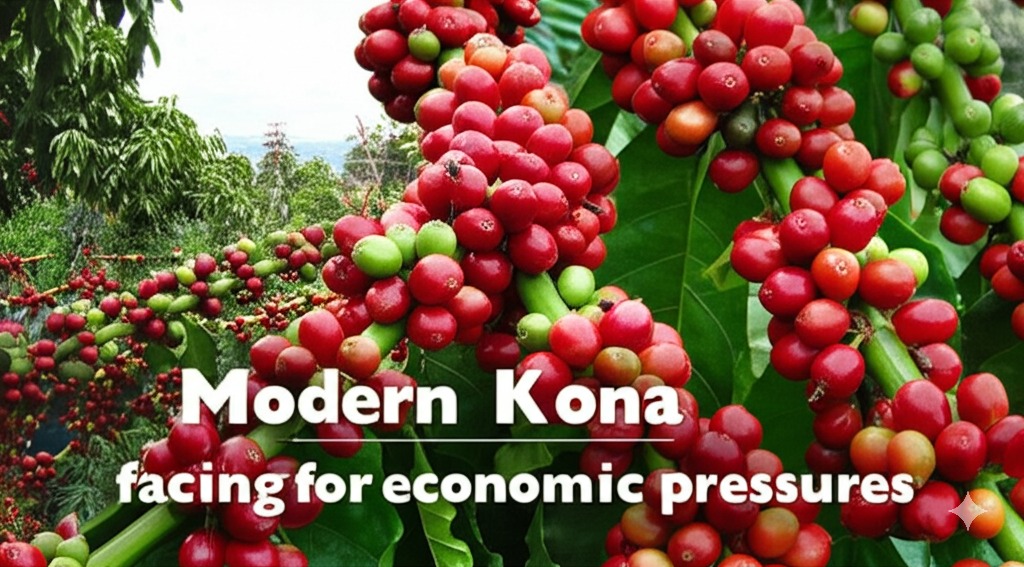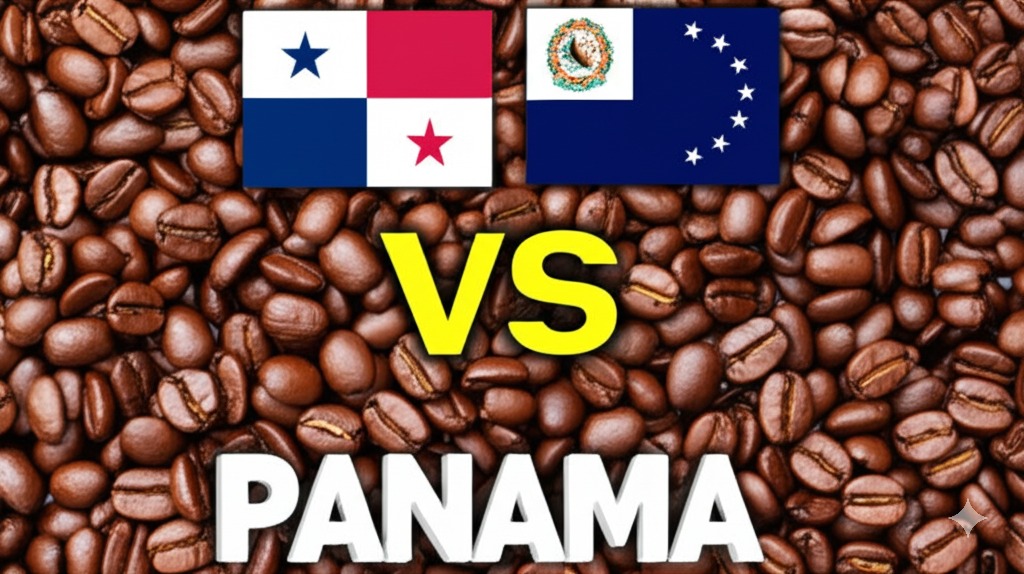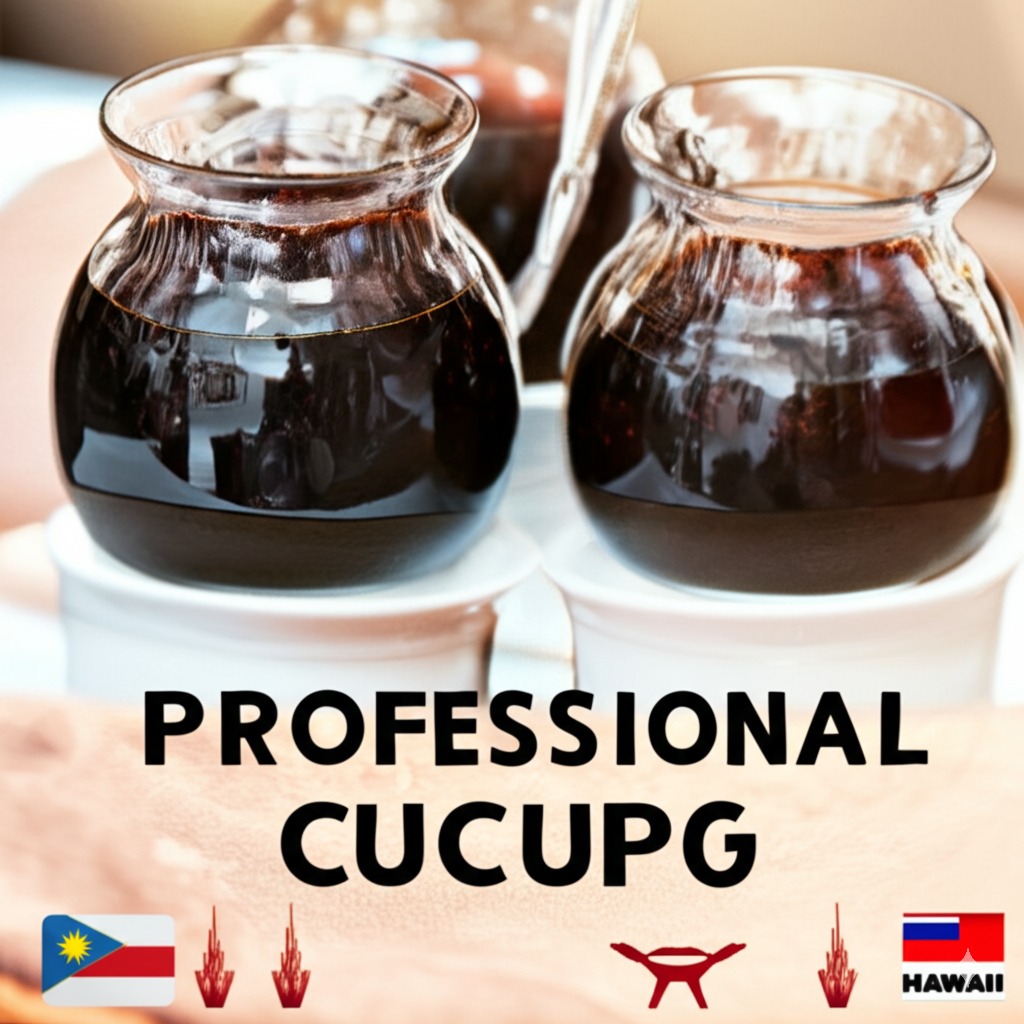¿El café de Panamá eclipsará el café Hawaii en 2025?
Los conocedores de café enfrentan un dilema al elegir entre orígenes premium. Con los cafés de Panamá y Hawaii al mando de los principales precios, muchos se preguntan que ofrecen un mejor valor y si las tendencias actuales del mercado continuarán en 2025.
Panama Coffee probablemente mantendrá su ventaja competitiva sobre el café de Hawai en 2025 debido a su infraestructura de subastas establecida, diversos microlotas y costos de producción significativamente más bajos. Si bien el café de Hawai conservará su atractivo de lujo, las variedades de geisha de Panamá continuarán estableciendo registros mundiales de precios y ganando reconocimiento global.

Como alguien que ha rastreado los mercados de café premium durante años, he sido testigo del dramático ascenso de Panamá Geisha y la presencia constante de Kona hawaiana. Ambos coman precios premium, pero por diferentes razones. Mirando hacia el futuro hasta 2025, varios factores determinarán qué origen domina el segmento de café ultra premio. Permítanme desglosar lo que pueden esperar los profesionales del café y los entusiastas.
¿Cómo cambiará la posición del mercado de Panama Coffee para 2025?
El café de Panamá enfrenta una competencia creciente de orígenes especializados emergentes. Muchos se preguntan si su notable trayectoria de precios puede continuar o si la burbuja Geisha de Panamá finalmente estallará para 2025.
Panamá Coffee fortalecerá su posición para 2025 a través de la innovación continua en los métodos de procesamiento, ampliando su diversidad genética del café más allá de Geisha y desarrollar relaciones más directas de granja a toster. Lo mejor de la subasta de Panamá continuará estableciendo récords mundiales, mientras que los productores implementarán estrategias de adaptación climática para proteger la calidad.

Bucear más profundamente en el futuro del café de Panamá requiere examinar su trayectoria actual. Desde que rompió registros de subastas a principios de la década de 2000 con variedades de geisha, Panamá ha superado constantemente los límites de la calidad del café. Para 2025, espero que varios desarrollos significativos mantengan la prestigiosa posición de Panamá.
El cambio climático representa tanto un desafío como una oportunidad para el café de Panamá. El aumento de las temperaturas amenazan las zonas de cultivo tradicionales, pero los productores con visión de futuro ya están implementando estrategias de adaptación. Para 2025, veremos un cultivo ampliado a elevaciones más altas (por encima de 1,800 metros) en regiones previamente consideradas demasiado frescas para la producción de café de calidad. Estas nuevas microclimas pueden producir perfiles de sabor distintivos que actualmente no están asociados con Panamá.
La innovación del procesamiento se acelerará hasta 2025. Mientras que el procesamiento lavado domina el segmento premium de Panamá hoy en día, las técnicas de fermentación experimental están ganando tracción. La fermentación anaeróbica, la maceración carbónica y los métodos híbridos se volverán más refinados y comercialmente significativos. He visitado granjas que ya implementan estas técnicas, y para 2025, estos lotes experimentales comandarán su propia categoría premium en las subastas.
The genetic diversity of Panama's coffee crops will expand beyond geisha varieties. While geisha will remain the flagship, producers are already experimenting with rare Ethiopian landraces and hybridized cultivars. By 2025, we'll likely see emerging "super varieties" que combinan la famosa complejidad floral de Geisha con una mayor resistencia a las enfermedades y potencial de rendimiento.
| Factores de café de Panamá | Estado actual (2023) | Estado proyectado (2025) |
|---|---|---|
| Precio de subasta promedio (lotes principales) | $ 800-1,000/lb | $ 1,200-1,500/lb |
| Variedades dominantes | Geisha, Catuai | Geisha, ricas terrestres etíopes, nuevos híbridos |
| Métodos de procesamiento clave | Lavado, natural | Fermentación extendida, maceración anaeróbica, carbónica |
| Adaptación climática | Implementación temprana | Cambios de elevación generalizados, gestión de sombras |
| Reconocimiento del mercado | Segmento de café especializado | Reconocimiento de mercado de lujo más amplio |
¿Qué desafíos enfrentará el café de Hawai hasta 2025?
Los productores de café de Hawái luchan con costos de producción extraordinariamente altos y un área de crecimiento limitada. Muchos observadores de la industria cuestionan si Hawaii puede mantener su estado de café premium a medida que otras regiones mejoran la calidad al tiempo que cobran menos.
Hawaii Coffee enfrentará las crecientes presiones de costos hasta 2025, con gastos de mano de obra potencialmente alcanzando $ 25-30 por hora y los valores de la tierra continúan subiendo. Estos factores empujarán los precios minoristas más altos, mientras que la competencia de Panamá y otros orígenes premium se intensifican, lo que potencialmente reduce la cuota de mercado de Hawai en el segmento ultra premium.

Bucear más profundamente en el futuro del café de Hawai revela una imagen compleja de desafíos y estrategias de adaptación. La industria del café de Hawai, particularmente su reconocida región de Kona, opera bajo limitaciones únicas. Como el único estado de EE. UU. Produce café comercialmente, los costos de producción de Hawai reflejan los estándares laborales estadounidenses y el alto costo de vida de la isla.
Para 2025, estas presiones económicas se intensificarán. Los costos laborales, ya desafiantes a las tasas actuales, probablemente aumentarán a $ 25-30 por hora a medida que aumente los aumentos salariales mínimos de Hawai y la competencia para los trabajadores agrícolas calificados. Este componente laboral solo pone a Hawai en una desventaja significativa en comparación con Panamá, donde los costos laborales son una fracción de Hawai.
Los valores de la tierra presentan otro desafío sustancial. Prime Coffee Crowing Land en Kona actualmente tiene $ 150,000- $ 200,000 por acre. Para 2025, estos valores pueden aumentar en un 15-20%, esforzando aún más la viabilidad económica de la agricultura del café. Es probable que esta presión acelerará la tendencia de las granjas familiares más pequeñas que se venden a corporaciones o desarrolladores agrícolas más grandes, lo que puede cambiar el carácter de la industria del café de Hawai.
Los impactos del cambio climático variarán en las regiones de cultivo hawaianas para 2025. Si bien algunas áreas pueden beneficiarse del cambio de patrones de lluvia, otras enfrentarán una mayor presión de la óxido de la hoja de café, que ya se ha detectado en las islas. A diferencia de las granjas de mayor elevación de Panamá, las regiones de café de Hawai tienen menos espacio para expandirse hacia arriba a temperaturas más frías a medida que continúa el calentamiento.
La innovación en el sector del café de Hawai se centrará en estrategias de valor agregado en lugar de técnicas de producción. Para 2025, espero ver experiencias turísticas más integradas, modelos exclusivos de suscripción directa al consumidor y marca compartida con compañías de bienes de lujo. Estos enfoques intentarán compensar las desventajas de los costos de producción mejorando la exclusividad percibida del café hawaiano.
| Factores de café de Hawaii | Estado actual (2023) | Estado proyectado (2025) |
|---|---|---|
| Costos de producción | $ 30-35/lb (café verde) | $ 40-45/lb (café verde) |
| Costos laborales | $ 15-20/hora | $ 25-30/hora |
| Valor de la tierra (Kona) | $ 150k-200k/acre | $ 180k-240k/acre |
| Posicionamiento del mercado | Exclusividad geográfica | Integración de lujo/estilo de vida |
| Adaptación climática | Opciones limitadas | Mayor diversificación de variedades |
¿Cómo se compararán el precio y la disponibilidad entre Panamá y el café de Hawai en 2025?
Los compradores de café y los entusiastas luchan por justificar los altos precios de los cafés premium de Panamá y Hawai. Muchos cuestionan si estos cafés se convertirán en artículos de lujo aún más exclusivos para 2025, fijando fijación de todos los coleccionistas menos dedicados.
Para 2025, los lotes de subasta más importantes de Panamá probablemente alcanzarán los $ 1,500/lb mientras mantienen una disponibilidad más amplia en la gama minorista de $ 50-100/lb. Los precios del café de Hawái aumentarán a $ 60-80/lb al por mayor con un volumen de producción limitado. Panamá ofrecerá un mejor valor en los puntos de precio de la mitad del premio, mientras que los lotes principales de los Orígenes se convierten en artículos de lujo de grado de inversión.

Poner más profundamente en el paisaje de precios futuro revela diferencias significativas en cómo estos dos orígenes se posicionarán. La estratificación de precios ya evidente en los mercados de café de Panamá y Hawai se volverá más pronunciada para 2025, creando distintos niveles de accesibilidad.
El sistema de subastas de Panamá, particularmente el mejor de la competencia de Panamá, continuará impulsando precios extraordinarios para ganar lotes. He rastreado estas subastas durante años, viendo que los discos se rompen repetidamente. Para 2025, espero que los lotes de subastas superiores superen regularmente $ 1,000/lb, con lotes excepcionales que se acercan a $ 1,500/lb. Sin embargo, estos precios de los titulares representan una pequeña fracción de la producción especializada de Panamá.
The more significant development will be Panama's middle market expansion. Currently, excellent Panama geisha coffees (scoring 88-90 points) retail for $40-60/lb. By 2025, this tier will likely increase to $50-80/lb but become more widely available through specialty channels. Panama producers will strategically expand production of these "accessible premium" Coffees para construir el reconocimiento de marca al tiempo que preserva la exclusividad de sus mejores microlotas.
La estructura de precios de Hawai evolucionará de manera diferente. Sin la infraestructura de subastas de Panamá para crear registros de precios que generan titulares, Hawaii Coffee se centrará en un posicionamiento premium consistente. Los precios al por mayor de Kona Coffee de Kona probablemente alcanzarán $ 60-80/lb para 2025, con precios minoristas entre $ 90-120/lb. Esto posiciona incluso el café hawaii estándar en el segmento de lujo, mientras que Panamá ofrece múltiples puntos de entrada para los consumidores.
Las diferencias de volumen de producción serán más significativas para 2025. El área de crecimiento limitado de Hawai (aproximadamente 7,000 acres en total) no puede expandirse sustancialmente, manteniendo la producción relativamente constante. Mientras tanto, Panamá tiene espacio para una expansión cuidadosa, particularmente en las regiones Boquete y Volcán. Esto permitirá a Panamá aumentar la presencia de su mercado, mientras que Hawai sigue limitada.
Los patrones de disponibilidad divergirán aún más para 2025. Hawaii mantendrá su disponibilidad estacional predecible con una calidad consistente. Los mejores cafés de Panamá se asignarán cada vez más a través de arreglos precontratados con tostadores de élite en todo el mundo, con algunos productores transacciones directamente con coleccionistas de alto valor de la red, similar a los sistemas de asignación de vinos finos.
| Factor de comparación | Café de Panamá (2025) | Café de Hawai (2025) |
|---|---|---|
| Precios de primer nivel | $ 800-1,500/lb (subasta) | $ 150-200/lb (directo) |
| Minorista a mitad de premium | $ 50-100/lb | $ 90-120/lb |
| Volumen de producción | Aumento moderado | Disminución estática o ligera |
| Canales de disponibilidad | Subastas, comercio directo, tostadores especializados | Minoristas directos al consumidor, turismo y de lujo |
| Propuesta de valor | Calidad excepcional a los niveles | Exclusividad y singularidad geográfica |
¿Qué diferencias de calidad y sabor definirán el café de Panamá contra Hawái en 2025?
Los bebedores de café luchan por comprender las diferencias de calidad objetivo entre los orígenes premium. Muchos se preguntan si los perfiles de sabor distintivos de los cafés de Panamá y Hawai permanecerán consistentes durante 2025 o si el cambio climático y las prácticas de producción alterarán sus características.
Para 2025, los cafés de Panamá mostrarán más métodos de procesamiento experimentales, produciendo perfiles de acidez floral, tropical compleja y acidez similares al vino. Los cafés de Hawai mantendrán su perfil clásico dulce y limpio con cuerpo medio y notas sutiles de nuez y caramelo, aunque las nuevas variedades pueden introducir más complejidad para combatir los desafíos climáticos.

Poner más profundamente en el futuro sensorial de estos prestigiosos cafés revela desarrollos fascinantes en el horizonte. Los perfiles de sabor que definen estos orígenes hoy en día evolucionarán a través de la innovación deliberada y la necesidad ambiental para 2025.
El desarrollo del sabor de Panamá se impulsará en gran medida mediante el procesamiento de la experimentación. El proceso tradicional lavado que destacó las delicadas notas florales y cítricas de Geisha se unirá por técnicas de fermentación más avanzadas. La fermentación anaeróbica extendida producirá notas intensas de fruta tropical con dulzura elevada. Las inoculaciones controladas de levadura, ya probadas en las granjas progresivas que he visitado, creará resultados de sabor predecibles con complejidad sin precedentes.
Las presiones climáticas también influirán en el perfil de sabor de Panamá para 2025. Las temperaturas ligeramente más cálidas en las elevaciones de crecimiento tradicionales intensificarán las características de la fruta al tiempo que reducen la complejidad floral. Los productores con visión de futuro ya están plantando en elevaciones más altas para mantener el clásico perfil de Geisha que pone a Panamá en el mapa. Para 2025, probablemente veremos cafés de Panamá comercializados específicamente por niveles de elevación, cada uno con características sensoriales distintas.
El desarrollo del sabor de Hawai seguirá un camino más conservador impulsado por la consistencia y la tradición. El perfil clásico de Kona (limpio, dulce, de cuerpo medio con nueces sutiles y notas de caramelo) seguirá siendo el punto de referencia. Sin embargo, la adaptación climática requerirá algunos cambios. Los productores de Hawai ya están introduciendo variedades más robustas que pueden resistir las presiones emergentes de las enfermedades mientras mantienen la calidad.
Para 2025, espero ver una diferenciación regional más distinguida dentro de Hawai. Si bien Kona sigue siendo el buque insignia, regiones como Ka'u, Puna y Maui desarrollarán identidades más definidas respaldadas por enfoques de procesamiento específicos que resaltan sus microclimas únicas. Esta diferenciación regional le dará a Hawaii un espectro de sabor más amplio para exhibir, aunque aún se centra en el equilibrio y el accesibilidad en lugar del personaje exótico de las ofertas de Panamá.
Las trayectorias de puntaje de consulta diferirán entre los orígenes hasta 2025. Los lotes superiores de Panamá continuarán empujando los límites superiores de los sistemas de puntuación, con lotes excepcionales que superan regularmente los 95 puntos en la escala de café especializado. Los cafés Hawaii mantendrán puntajes sólidos en el rango de 84-90 puntos, lo que representa una calidad excelente pero menos exótica.
| Atributo de sabor | Café de Panamá (2025) | Café de Hawai (2025) |
|---|---|---|
| Acidez | Brillante, complejo, como el vino | Moderado, limpio, como la manzana |
| Cuerpo | Ligero a medio | Medio, sedoso |
| Dulzura | Intenso, fruta | Redondeado, como caramelo |
| Notas distintivas | Jasmine, bergamota, fruta tropical, vino | Macadamia, chocolate con leche, cítricos sutiles |
| Influencia de procesamiento | Alto (métodos experimentales) | Moderado (tradicional con refinamientos) |
| Consistencia | Variable entre lotes | Alta consistencia |
Conclusión
Para 2025, Panama Coffee mantendrá su liderazgo de calidad a través de la innovación y la diversidad genética, mientras que Hawaii Coffee aprovechará su identidad geográfica única a pesar de los mayores costos. Ambos orígenes comandarán precios premium, pero Panamá ofrecerá un mejor valor en los puntos de precio mientras empuja los límites de lo que puede ser el café especial.
